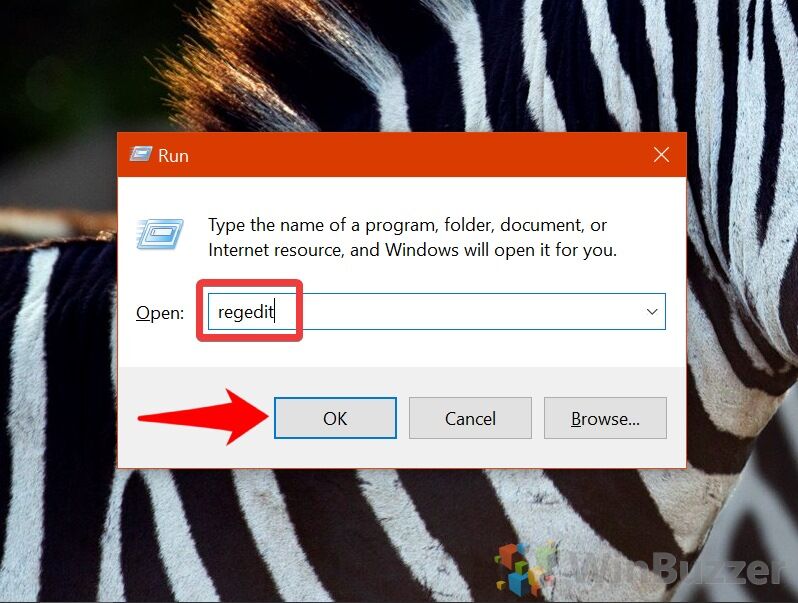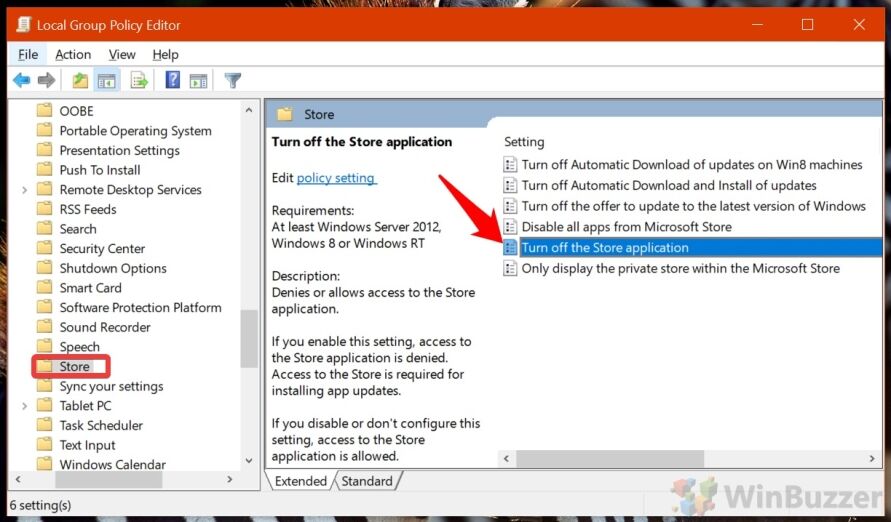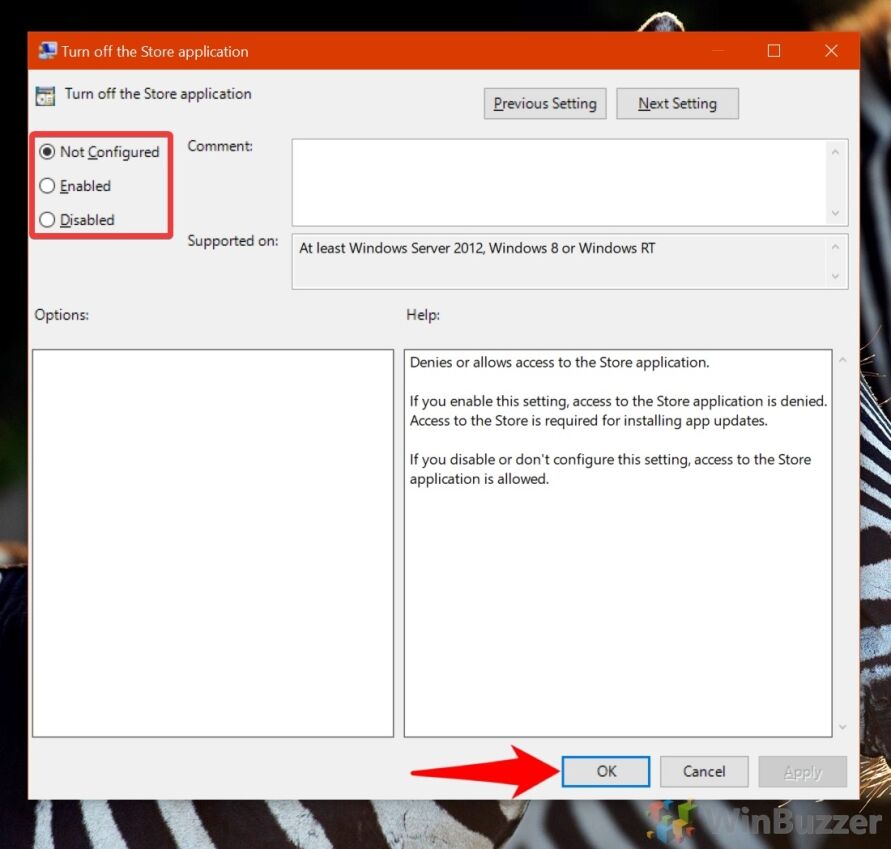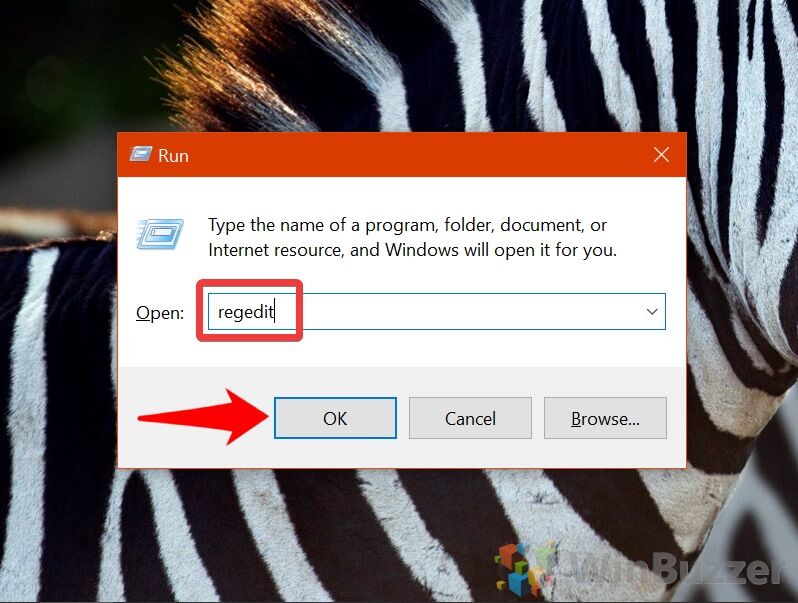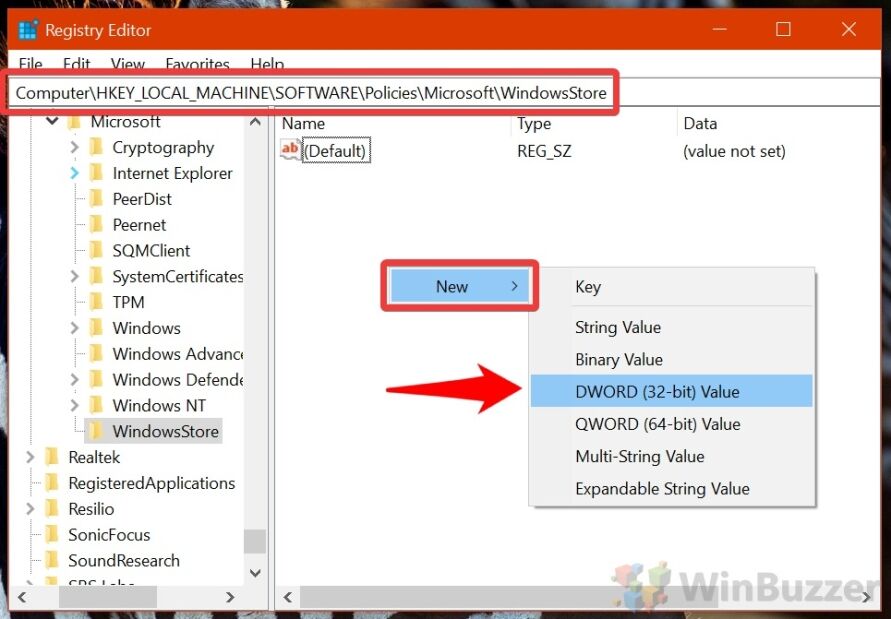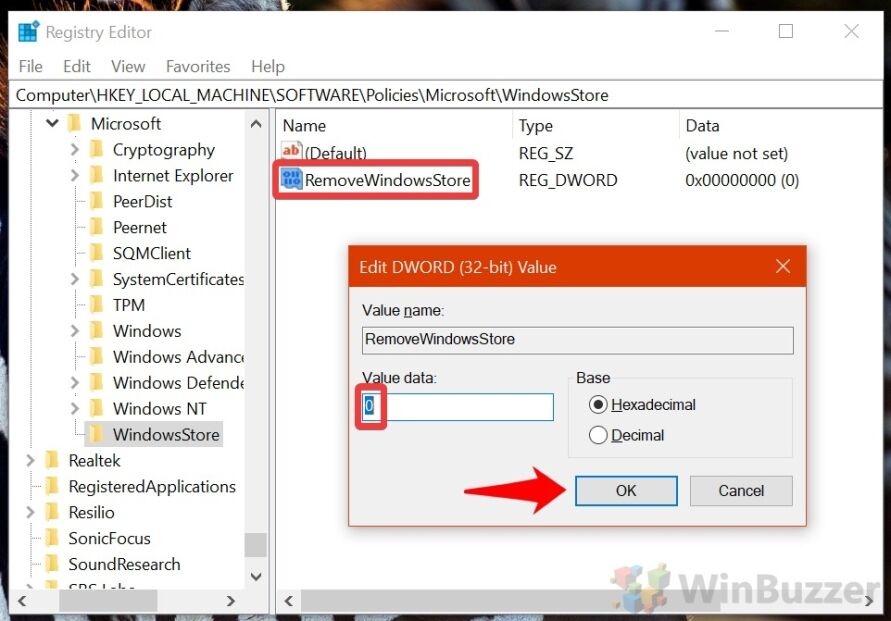
Although Microsoft enables Windows Store in Windows 10/8.1/8, you can manually disable it if you want. If you use Windows Store not so regularly or you don’t want others unwanted to sign in to the Windows Store on your PC to download apps, then you might as well turn off Windows Store in Windows 10.
2 ways to turn off Windows Store in Windows 10
- Way 1: through Local Group Policy Editor
- Way 2: through Registry Editor
Note: Either way, you first need to sign in to your Windows 10 as an administrator account.
Way 1: Turn off Windows Store through Local Group Policy Editor
Step 1: Open Command Prompt as administrator. Type gpedit.msc and press Enter key.
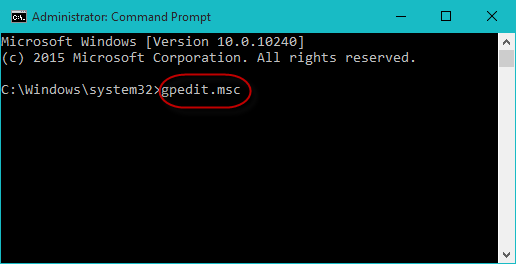
Step 2: Local Group Policy Editor opens. Navigate to User Configuration\Administrative Templates\Windows Components\Store. Then in the right pane double click on Turn off the Store application.
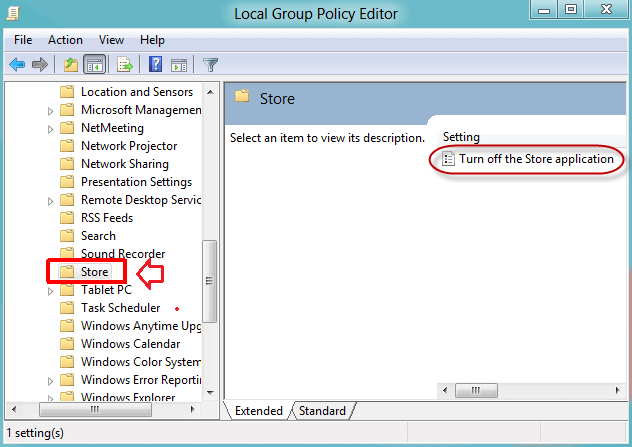
Step 3: Check Enabled, and then click Apply.
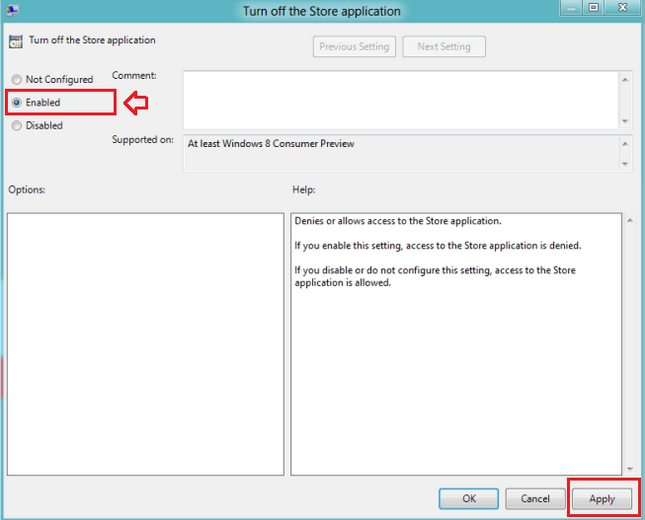
Step 4: Press Win + R to bring up a Run dialog box. Type gpupdate /force and click OK to update the changes. Then the Windows Store can be disabled on your Windows 10 PC.
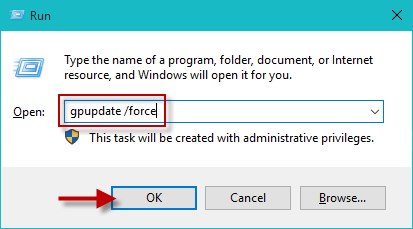
Way 2: Turn off Windows Store in Windows 10 through Registry Editor
Step 1: Press Win + R to bring up Run dialog. Type regedit and press Enter to open Registry Editor.
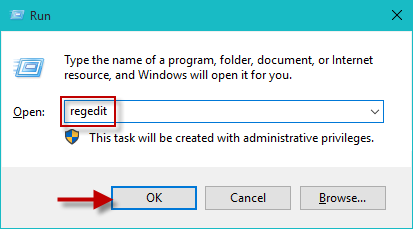
Step 2: Navigate to HKEY_LOCAL_MACHINE\SOFTWARE\Policies\Microsoft\WindowsStore. (If the WindowsStore key doesn’t exist, create it by right click on Microsoft folder.) Then right click on the blank area of the right pane, and then select New > DWORD (32-bit) Value to create a new DWORD value.
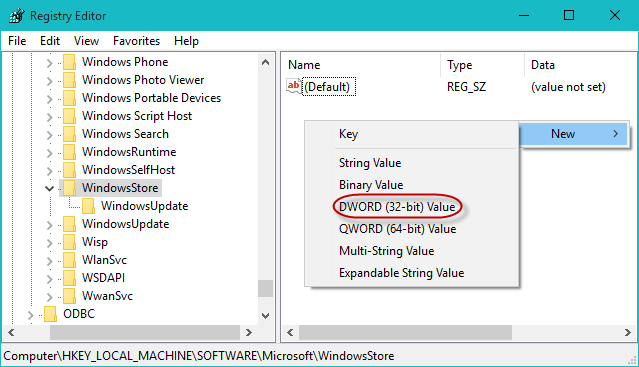
Step 3: Name the new value RemoveWindowsStore and then double click on it. Set the value to 1 and then click OK.
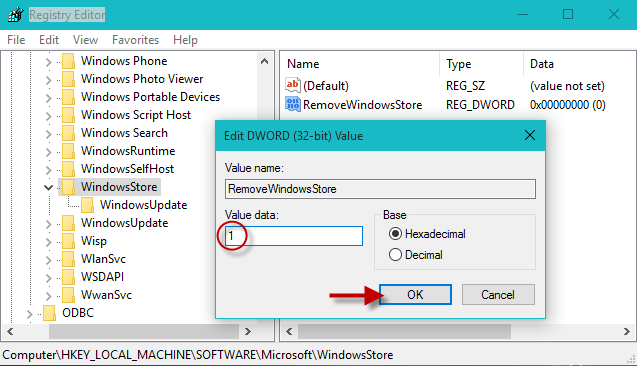
Step 4: Restart your PC so that the changes you’ve made will take effect. Then the Windows Store is turned off. It won’t be available on your Windows 10 PC before you enable it again.
Windows Store is a handy app in which there are various free and paid software applications. If others open and sign into the Windows Store on your PC and download malicious applications, this will do harm to your computer and bring much trouble for you. Hence, it makes sense to turn off Windows Store in Windows 8/8.1/10, if you use your PC in public.
Download Windows Speedup Tool to fix errors and make PC run faster
We have seen how to Disable Automatic App Updates in Windows 11/10/8. If you do not have any use for the Windows Store and never use any Windows Store apps, you may, if you wish, disable access to or turn off the Windows Store in Windows 11/10/8.1, using the Group Policy Editor.
You can use the Group Policy, AppLocker or the Registry Editor to enable or disable access to Microsoft Store in Windows 11/10. Do note that NOTE: starting with Windows 10 Pro v 1511, you will find that even after you apply the related Group Policy setting to Turn off the Store application, the setting does not get applied. Now, these policies are applicable to users of the Windows 11/10 Enterprise and Windows 11/10 Education editions only.
1] Using Group Policy Editor
To disable access to or turn off the Windows Store, type gpedit.msc in Run box and hit Enter to open the Local Group Policy Editor. Navigate to the following setting:
Computer Configuration > Administartive Templates > Windows Components > Store
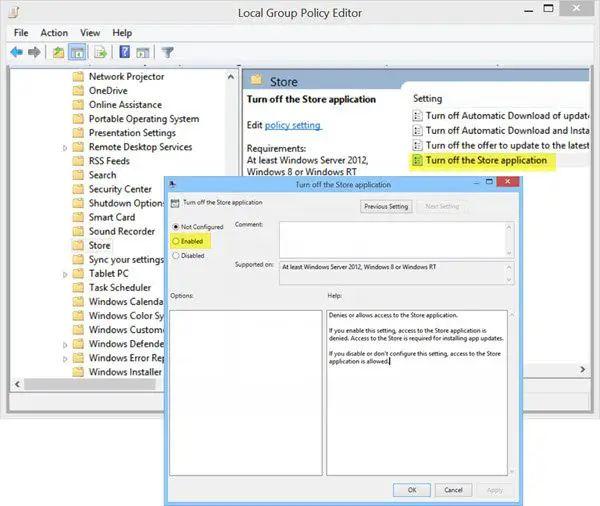
Here, in the right pane, you will see the setting Turn off the Store application.
Double-click on it to open the Settings box, select Enabled and click Apply.
This setting denies or allows access to the Store application. If you enable this setting, access to the Store application is denied. Access to the Store is required for installing app updates. If you disable or don’t configure this setting, access to the Store application is allowed.
Exit Group Policy Editor.
To re-enable it, you will have to select Not configured and exit.
2] Using Registry Editor
If your version of Windows does not have the Group Policy Editor, Run regedit and hit Enter to open the Registry Editor. Navigate to the following registry key:
HKEY_LOCAL_MACHINE\SOFTWARE\Policies\Microsoft\WindowsStore
Create a new DWORD value in the WindowsStore key. Name it RemoveWindowsStore and give it a value of 1. If the WindowsStore key does no exist, create it, first.
Restart your Windows 10/8.1 computer.
You will have disabled the Windows Store application, and if anyone tried to open it, they will receive the following message:
Windows Store isn’t available on this PC. Contact your system administrator for more information
To re-enable the Windows Store, give RemoveWindowsStore a value of 0.
Hope this helps.
3] Using AppLocker
You can block access to Microsoft Store app with AppLocker by creating a rule for packaged apps. You’ll give the name of the Microsoft Store app as the packaged app that you want to block from client computers.
NOTE: Our Ultimate Windows Tweaker will let you do this in a click!
I repeat – In Windows 11/10 Pro now and later, you will find that you will not be able to disable Windows Store. It is available in Windows 11/10 Enterprise & Education only.
Anand Khanse is the Admin of TheWindowsClub.com, a 10-year Microsoft MVP (2006-16) & a Windows Insider MVP (2016-2022). Please read the entire post & the comments first, create a System Restore Point before making any changes to your system & be careful about any 3rd-party offers while installing freeware.
Microsoft’s app store has been struggling in recent years, but it’s still a useful tool from which you can install apps and games or download music and TV shows. For various, reasons, though, you may want to disable the Microsoft Store, preventing children from downloading non-approved apps or removing bloat from your system.
Conversely, some users run into “Microsoft Store is blocked” or “The store app is blocked” errors. This can happen when someone disables the Microsoft Store and doesn’t realize it will affect everyone on the PC. This guide will show you how to unblock or disable the app to suit your preferences. Instead of blocking, you can also completely uninstall the Microsoft Store as explained in this separate tutorial.
Unfortunately, due to a policy change from Microsoft disabling the Microsoft Store via the Group Policy editor is now only possible via Windows 10 Enterprise and Education. You can toggle the switch in Windows 10 Pro, but it doesn’t actually do anything. We’re going to cover unblocking and blocking the Microsoft Store with both the registry editor and GPO, but both take the policy route, meaning you may need one of the above editions. You’ll also require an administrator account to make these changes.
How to Unblock or Disable the Microsoft Store via Group Policy
This is the most user-friendly way to unblock or disable the Microsoft Store and is recommended for those who have access to GPO.
- Open the Group Policy Editor
Press “Windows + R” to open the Run dialog and type “gpedit.msc”. Click “OK”.
- Navigate to the “Turn off the Store application” policy
You can find it in
Computer Configuration\Administrative Templates\Windows Components\Store. Double-click it to open the Group Policy Editor. - Enable or Disable the Microsoft Store via GPO
In the properties screen, switch “Turn off the Store application” to “Enabled” to disable the Microsoft Store, or “Disabled” to unblock it. If you want it to follow the system defaults, set it to “Not Configured”.
How to Unblock or Disable the Microsoft Store via Regedit
For the more adventurous user or one who doesn’t have access to the Group Policy Editor, there’s the Windows Registry. Just be sure you read our safe use guide before continuing.
- Open the Registry Editor
Press “Windows + R” and type “regedit”, before pressing “OK”.
- Navigate to the Windows Store key and create a new DWORD
You can find the key at
Computer\HKEY_LOCAL_MACHINE\SOFTWARE\Policies\Microsoft\WindowsStore. Right-click the empty space in the main pane and choose “New > DWORD (32-bit) Value”. - Name the DWORD “RemoveWindowsStore”
Set the value data to “0” to allow the Microsoft Store and “1” to disable it. Then press “OK”.
Do you want to stop Microsoft Store from opening and running in the background on Windows 10 or 11? Then, here are different ways to try.
Steps for Disabling or Enabling Windows Store1. Block Windows Store background service2. Use Local Security Policy to disable Microsoft Store3. Enable or Disable the Store App via Edit Group Policy4. Stop Microsoft Store from opening using Regedit MethodFAQHow do I download without opening the Microsoft Store?Is Microsoft Store the same as Google Play?Why are there no Google apps in Microsoft Store?
With the introduction of Microsoft’s app store in Windows 10, users can install various third-party applications without visiting their websites. Yes, this makes things easy, but sometimes users must block the Windows Store for a few seasons.
Maybe they want to fix app-related problems or prevent other users from downloading apps.
Here are a few possible reasons that could be behind the need to disable Microsoft Store:
- To stop unwanted notifications.
- Save data by restricting the Microsoft store’s background process
- For improving security or privacy
- To troubleshoot some problems related to the store or its installed apps.
- Restrict children, family members, or other users from downloading apps without permission.
Steps for Disabling or Enabling Windows Store
Before following this tutorial, disabling the Microsoft store will also stop installing any application that requires its service. To use the store, users need to enable its services the same way they have blocked it.
1. Block Windows Store background service
Let’s start with the easy method of restricting the Microsoft store from running as a background service. This saves your system’s necessary data and RAM usage and stops you from receiving necessary notifications.
- Go to Windows 10 or 11 search bar, or click the Start button.
- Search for Settings and when the gear icon appears for it, click the same to open it.
- Click on the Apps option given on the left side. Now, from other right-hand side options, select “Installed Apps.”
- Search for the Mircosoft store either by scrolling down or using the search box given at the top to search it.
- As you find the store as an installed app, click on the three horizontal dots in front of it.
- Select “Advanced options” from the pop-up menu.
- Scroll down to “Background Apps permissions.”
- Click on the drop-down given under the “Let’s this app run in background” text.
- Select the Never option. This will block the Windows store service from running in the background.



Although, by default, the service of the Store is set to run in an optimized mode, if you want to disable it, select ‘Never.’ Whereas in the future, to allow it to run in the background again, you can do that from the same place and option.
2. Use Local Security Policy to disable Microsoft Store
Those who want to deactivate the Windows store’s functions completely can use the Local Security policy feature of the OS. Here are the steps you can use to enable or disable the Microsoft Store app.
- Click on the Windows search or start menu button, then type Local Security Policy there to open it.
- Alternatively, you can use the RUN box command, press Win+R and then type –
secpol.mscand press the OK button.
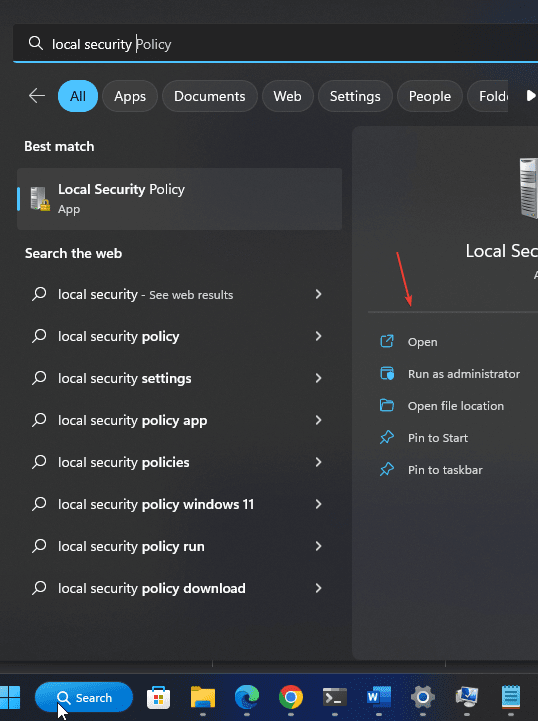
- After that, find the “Software Restriction Policies” folder and right-click on it.
- Select “New Software Restriction Policies” to create a new one.
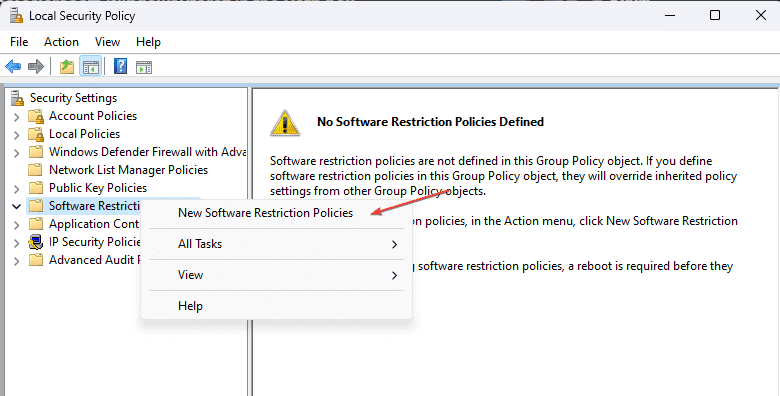
- On the right side, under Object Type, you will see a folder icon with “Additional Rules” Text. Right-Click that and select “New Path Rule...”.
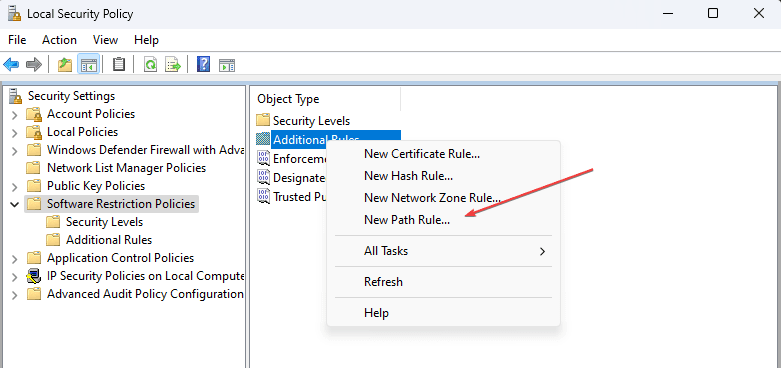
- To disable the Microsoft Store, in the Path, type the path where the store app is installed on Windows 10 or 11. To make things for you, here, we have given it. Just copy and paste it.
C:\Program Files\WindowsApps\Microsoft.WindowsStore*
- Select level- Disallowed and hit the Apply button.

Now, when anyone on the system tries to open the Microsoft Store, it will say, “This app has been blocked by your system administrator.” In the future, if you want to enable the Microsoft Store again, follow the same steps, and instead of “Disallowed,” select the Unrestricted option and Apply the changes.

3. Enable or Disable the Store App via Edit Group Policy
Microsoft Management Console (MMC) is a graphical user interface on the Windows operating system that provides a single interface to edit and manage Local Group Policy. Here we will use it to deactivate or activate the Microsoft Store feature.
- Open Local Group Policy Editor; for it, go to the Windows start menu and type “Edit Group Policy.” Alternatively, we can use the RUN command by pressing Win+R; and in it, type gpedit.msc and hit the OK button.
- From the left side, under Local Computer Policy -> select Administrative Templates -> Windows Components -> Store.
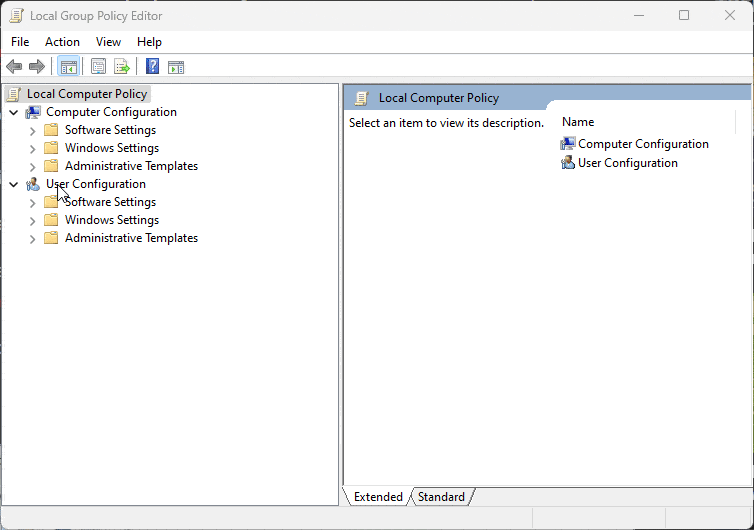
- You will see “Turn off the Store Application” on the right side; double click it, select Disabled, click Apply, and then the Ok button.
- In the future, if you want to enable the Windows store again on your system, then open the same Settings on Win 11 or 10 and select the “Enable” option.
4. Stop Microsoft Store from opening using Regedit Method
This method uses the Registry Editor of Windows 11 or 10 to enable or disable the Microsoft Store application.
Well, although the previously given methods are enough, here is one more to use:
- Open Windows Registry Editor by clicking on the Windows start button and typing its name.
- Run the Editor with Administrative rights, and click Yes when it asks for it.
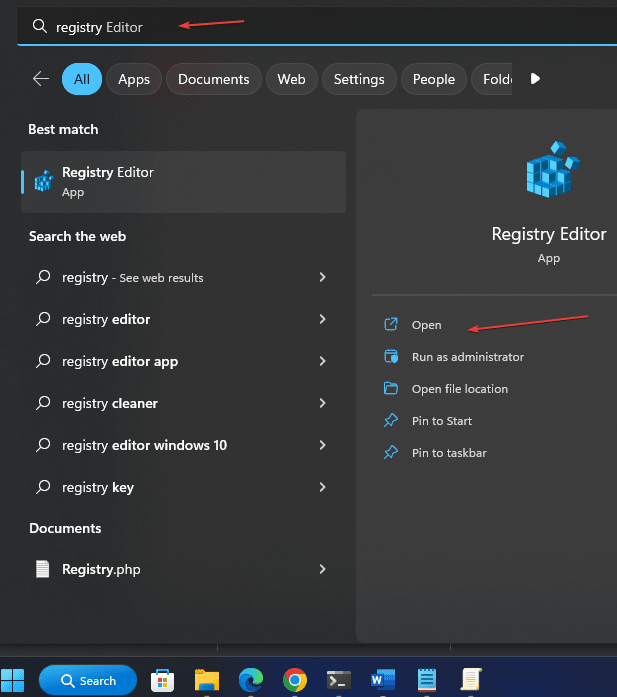
- Click on HKEY_LOCAL_MACHINE and then select SOFTWARE. After that, click on Policies, find Microsoft, and right-click on it.
- Select New Key and give it the name WindowsStore.
- Once you are done with it, select your created key and again right-click on it to select New -> Dword (32-bit) Value.
- Name it – RemoveWindowsStore, and after that, double-click the created Dword and set its value to 1. This will stop the Microsoft store from opening on Windows 10/11 platforms. Later, in the future, to enable access to the Store app again, change the value from 1 to 0 or delete the created DWORD key.
- Don’t forget to Restart your system to apply the changes.
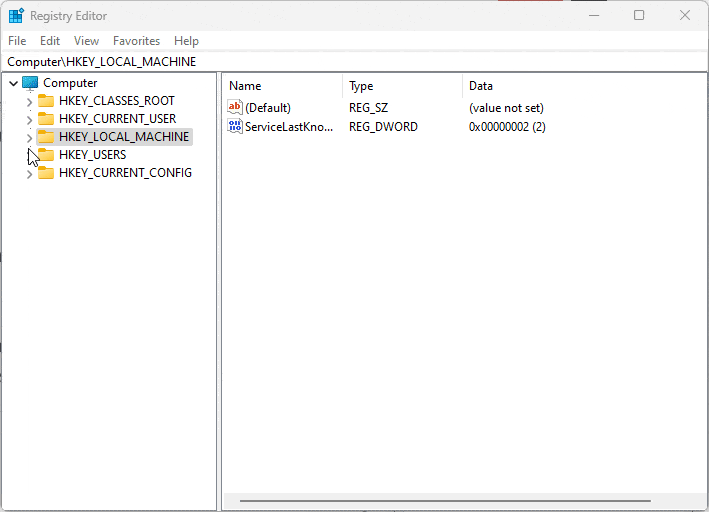
FAQ
How do I download without opening the Microsoft Store?
Using the Winget package manager, we can download apps available in the Microsoft Store without opening them. It is a command line utility available on Windows 10 or 11 systems. It allows the installation of various apps using a single command. Learn more about Winget.
Is Microsoft Store the same as Google Play?
Almost Google Play and Microsoft Store are similar because both provide an easy way to install the applications. However, Play Store owns by Google and supports Android Apps, whereas Microsoft Store is for Windows platforms only.
Why are there no Google apps in Microsoft Store?
Google apps are available on the Microsoft store because it is meant to host APK for Android platforms, and Windows is not an Android operating system.
Other Articles:
The Microsoft Store is an awesome tool that helps you download your favorite games and other apps. However, there are times when you might want to disable this tool.
For example, you could disable the Microsoft Store if other people use it to download apps without your permission. Or, you could disable the tool if it keeps sending you random notifications (no matter how many times you disable those notifications.)
As such, let’s explore the solutions for disabling and enabling the Microsoft Store.
1. Use the Local Group Policy Editor (LGPE)
You can apply this method only if you’re using Windows Pro, Education, and Enterprise versions. If you’re using the Home edition, you’d first need to apply some tricks to access the LGPE on Windows Home.
Otherwise, here are the steps for disabling or enabling the Microsoft Store using the LGPE:
- Press Win + R to open the Run command dialog box.
- Type gpedit.msc and press Enter to open the LGPE.
- Navigate to Computer Configuration > Administrative Templates > Windows Components > Store.
- Double-click the Turn off the Store application option on the right-hand side pane.
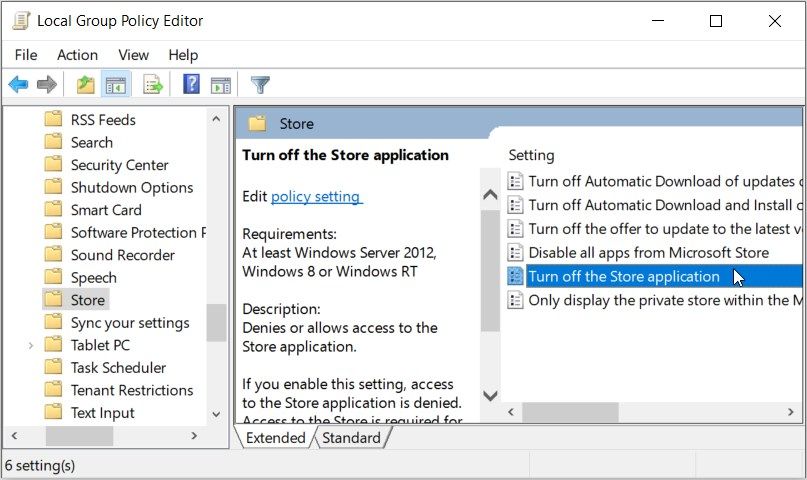
To disable the Microsoft Store, select Enabled. Otherwise, select Not Configured or Disabled to enable the Microsoft Store app. Finally, click Apply and then click OK to save these changes.
2. Use the Registry Editor
The Registry Editor is an incredible tool that can help you configure various system settings. In this case, we’ll check out how you can use it to disable or enable the Microsoft Store app.
Before you get started, back up the Registry just in case something goes wrong.
Now, here are the steps for enabling or disabling the Microsoft Store using the Registry Editor:
- Press Win + R to open the Run command dialog box.
- Type Regedit in the search box and press Enter to open the Registry Editor.
- Copy-paste the following command into the address bar and press Enter:
HKEY_LOCAL_MACHINE\SOFTWARE\Policies\Microsoft\
From there, follow these steps:
- Right-click on the Microsoft key and select New > Key.
- Name the new key as WindowsStore and then press Enter.
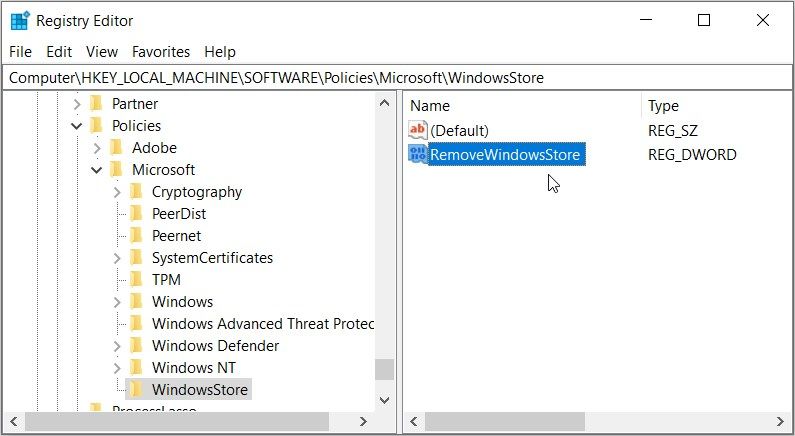
Next, right-click on the WindowsStore key and select New > DWORD (32-bit) Value. From there, name the value as “RemoveWindowsStore” and then press Enter.
To disable the Microsoft Store, double-click on the RemoveWindowsStore value and set its Value Data to 1. Otherwise, set the Value data to 0 (zero) to enable the Microsoft Store.
From there, press the OK button. Finally, close the Registry Editor and restart your device to save these changes.
3. Use the Software Restriction Policies in the Local Security Policy
The Software Restriction Policies option in the Local Security Policy can help. Here’s how you can use this feature to enable or disable the Microsoft Store:
- Press Win + R to open the Run command dialog box.
- Type secpol.msc in the search box and press Enter to open the Local Security Policy.
- Click the Software Restriction Policies option on the left-hand side. Next, right-click on Additional Rules on the right and select New Path Rule.
- Type %programfiles%\WindowsApps\Microsoft.WindowsStore* in the Path box.
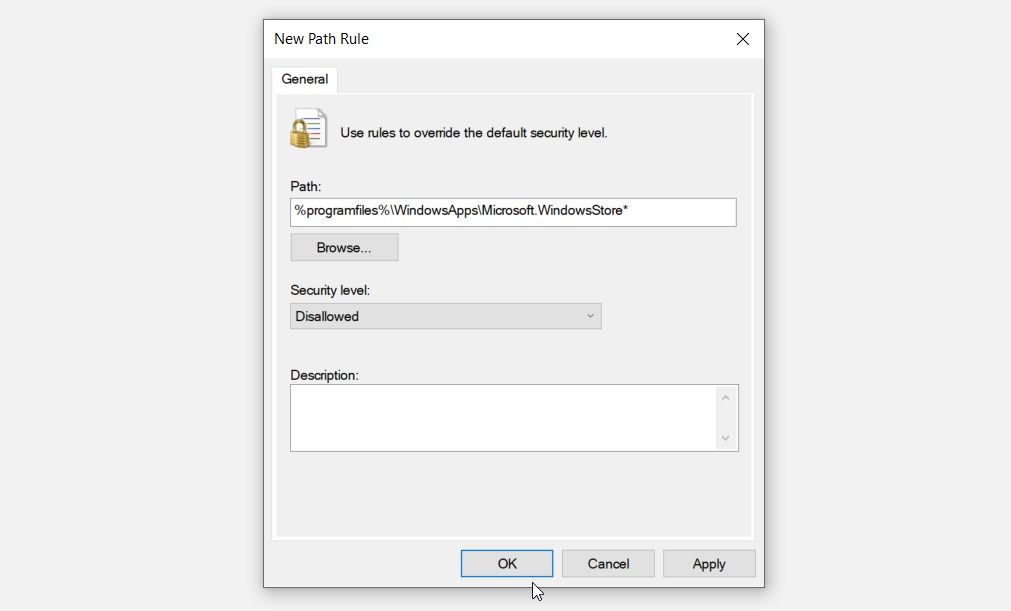
To disable the Microsoft Store, click the Security level drop-down menu and select Disallowed. Alternatively, click the drop-down button and select Unrestricted to enable the Microsoft Store. Finally, press Apply and then press OK.
4. Use the AppLocker Settings in the Local Security Policy
The AppLocker tool also makes it easy for you to enable or disable the Microsoft Store. In fact, this is a brilliant feature to use in case you want to enable or disable any Windows app.
Here are the steps you need to follow:
- Type Local Security Policy in the Start menu search bar. Next, right-click on the Best match result and click Run as administrator.
- Navigate to Application Control Policies > AppLocker > Packaged app Rules.
- Right-click on a blank space on the right-hand side and select Create New Rule.
- Click the Next button in the Before You Begin screen.
- Check the Deny button in the Permissions screen to disable the Microsoft Store. Alternatively, click the Allow button to enable the tool.
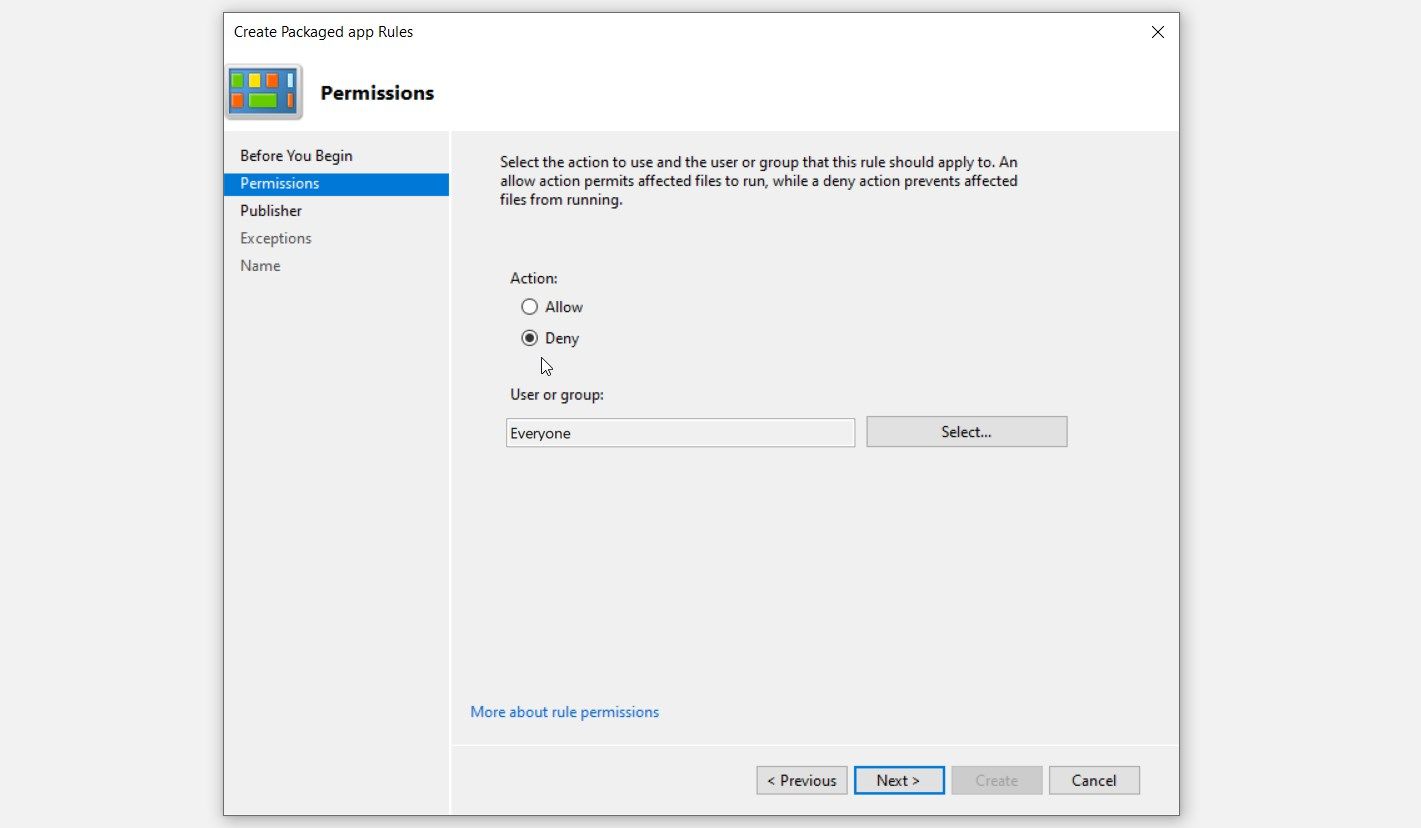
Click Next to continue. From there, follow these steps once you land on the Publisher screen:
- Check the Use an installed package app as a reference option. From there, click the Select button to search for the Microsoft Store.
- On the next screen, check the Microsoft Store box and then click OK. This should take you back to the Publisher screen.
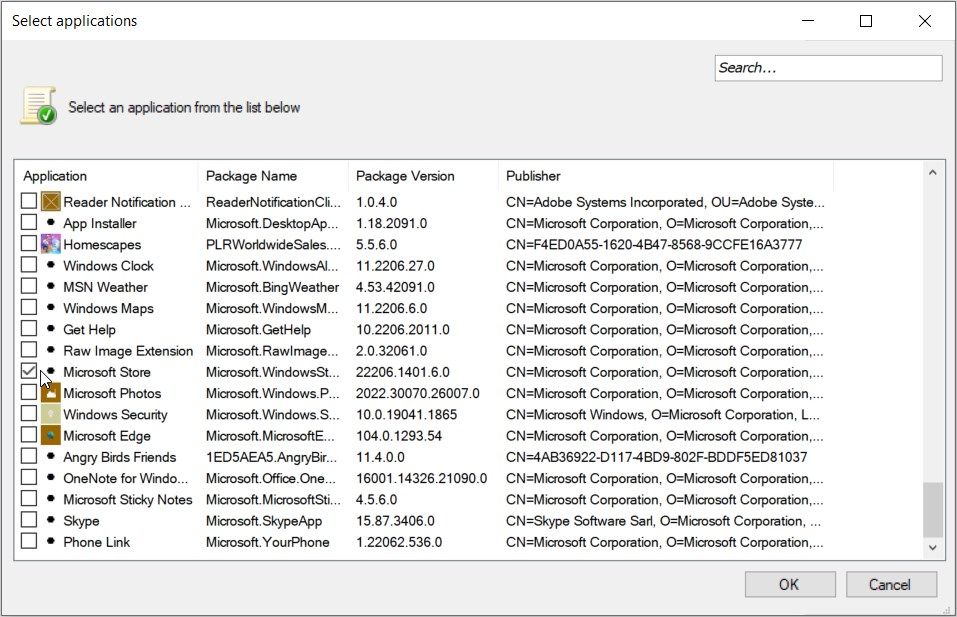
Click Next on the Publisher screen, and then click Next again when you get to the Exceptions screen.
Finally, type a name in the Description: (Optional) box on the Name and Description window. For example, you can type something like “A tool for enabling or disabling the Microsoft Store.” Otherwise, you can skip this step.
Finally, click the Create button.
If you selected “Deny” in the Permissions screen, the Microsoft Store should be disabled. To re-enable the Microsoft Store at a later stage, follow these steps:
- Open the Local Security Policy and navigate to the Packaged app Rules option as per the previous steps.
- Double-click the Microsoft Store option on the right-hand side.
- Navigate to the General tab.
- Check the Allow button to re-enable the Microsoft Store. Finally, press Apply and then press OK to apply these changes.
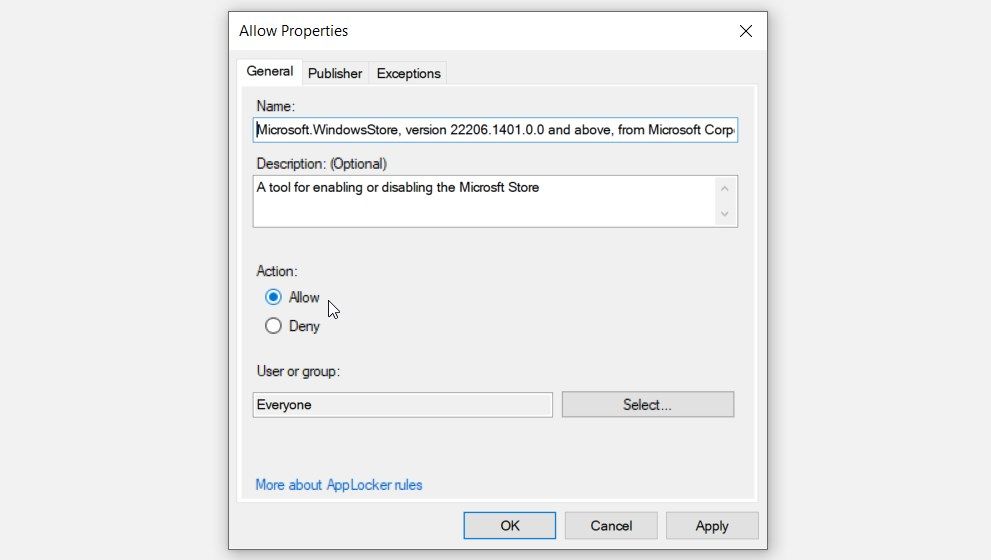
5. Use the System Settings to Enable or Disable the App From Running in the Background
There are times when you don’t want to completely disable the Microsoft Store. Instead, you might only be interested in stopping the app from sending you tons of notifications.
In this instance, you can disable the tool from running in the background. That way, the app won’t send you notifications randomly.
Here are the steps for disabling the Microsoft Store from running in the background:
- Type Settings in the Start menu search bar and select the Best match. Alternatively, try the various ways to access the Windows settings.
- Select Privacy from the options. Next, scroll down on the left-hand side and then select Background apps.
- Scroll down and locate the Microsoft Store on the right-hand side. To disable the tool from running in the background, turn off the button next to this option. Alternatively, turn on the button to allow the app to run in the background.
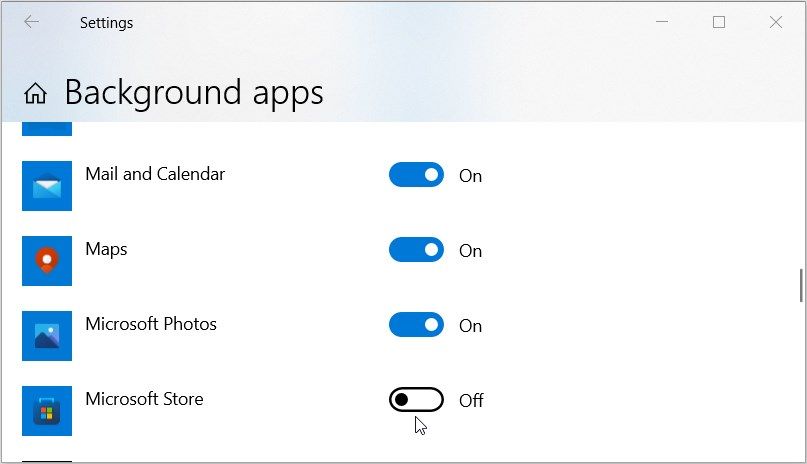
Enabling or Disabling the Microsoft Store Isn’t Complicated
Disabling the Microsoft Store prevents others from downloading unwanted apps on your device. Meanwhile, enabling the app can help you get rid of error messages like, «Microsoft Store is blocked.»
Now, whether you want to disable or enable the Microsoft Store, try any of the tips we’ve covered. If you can’t run the app while it’s enabled, then you need to try a few other solutions.

